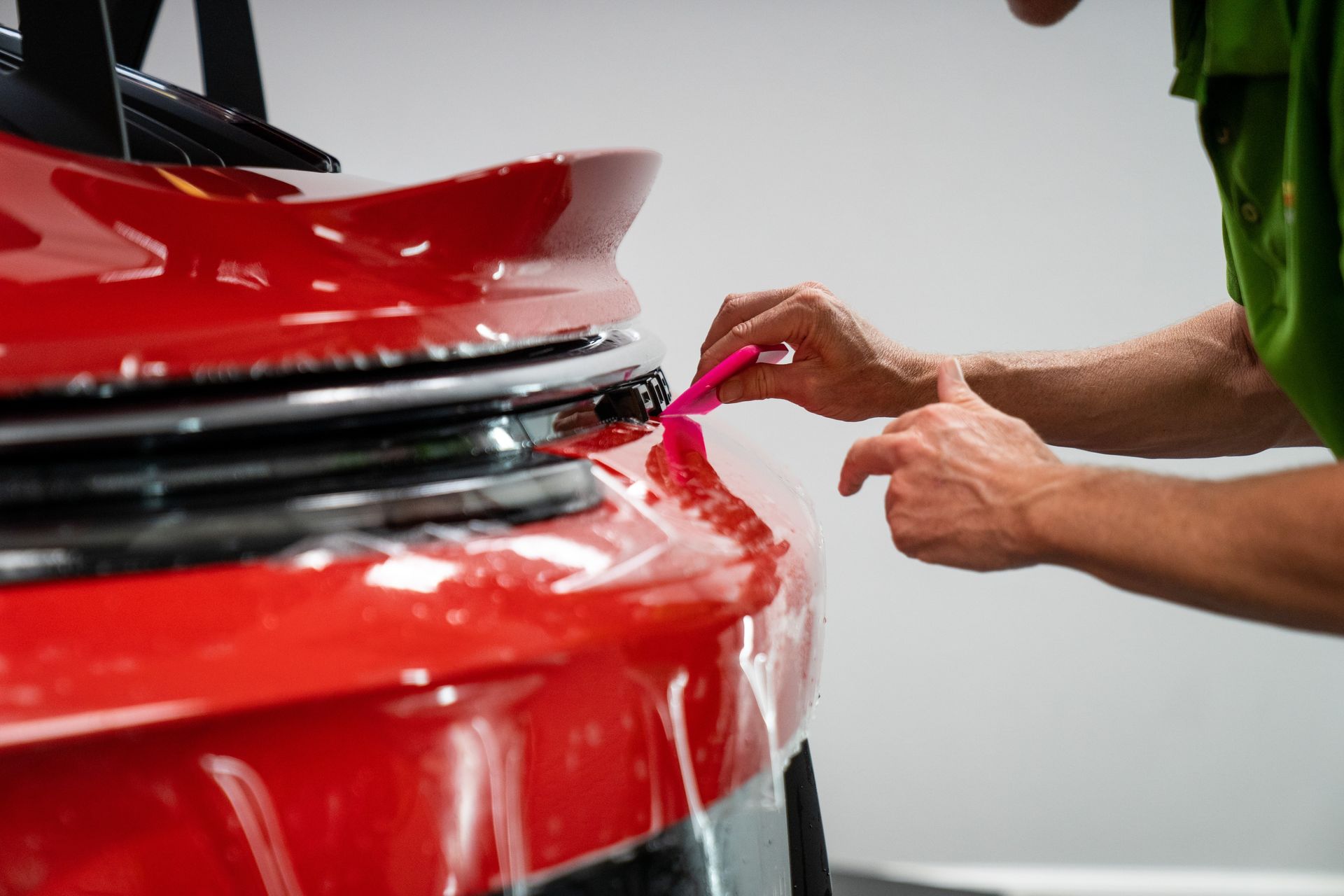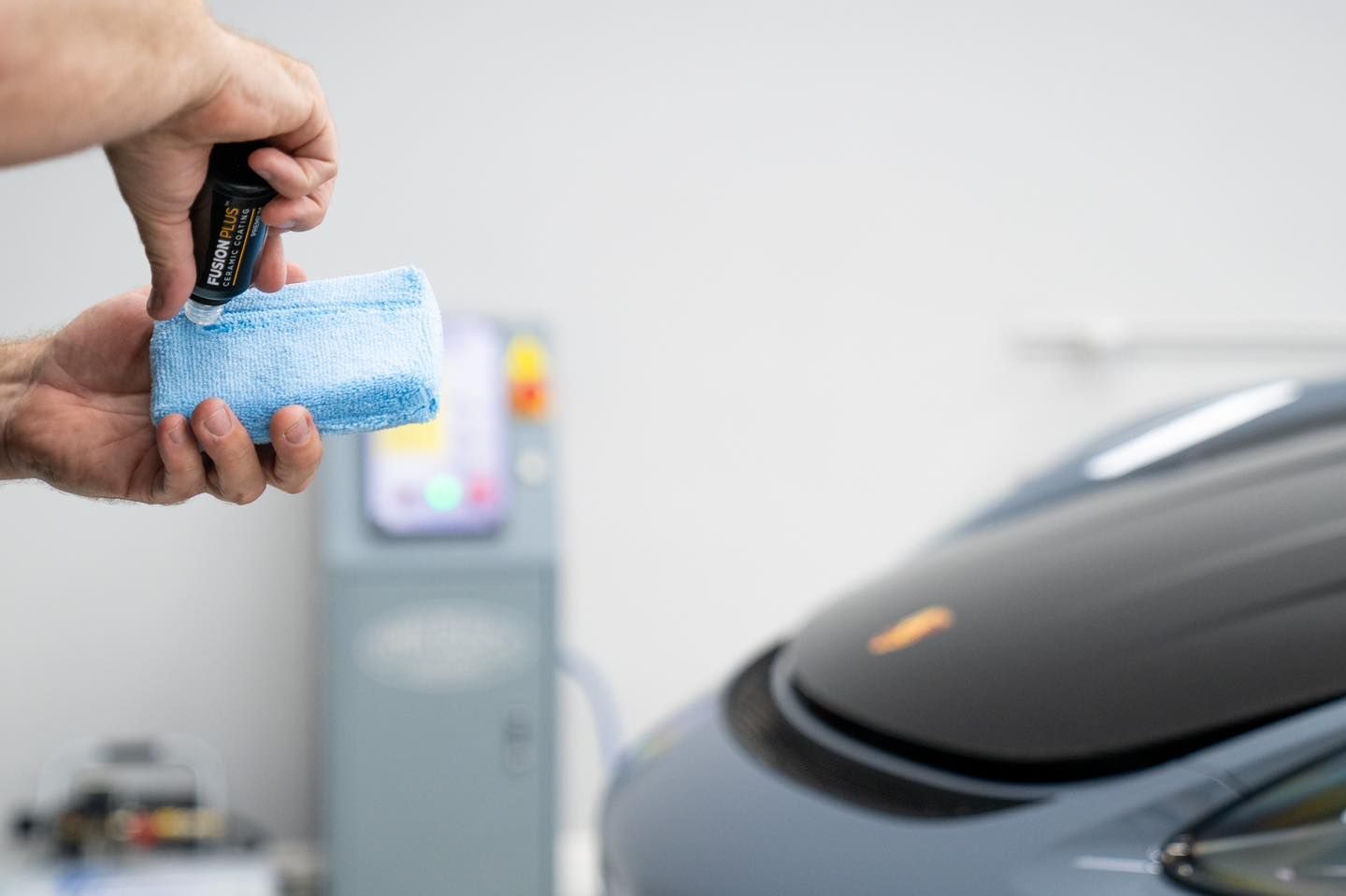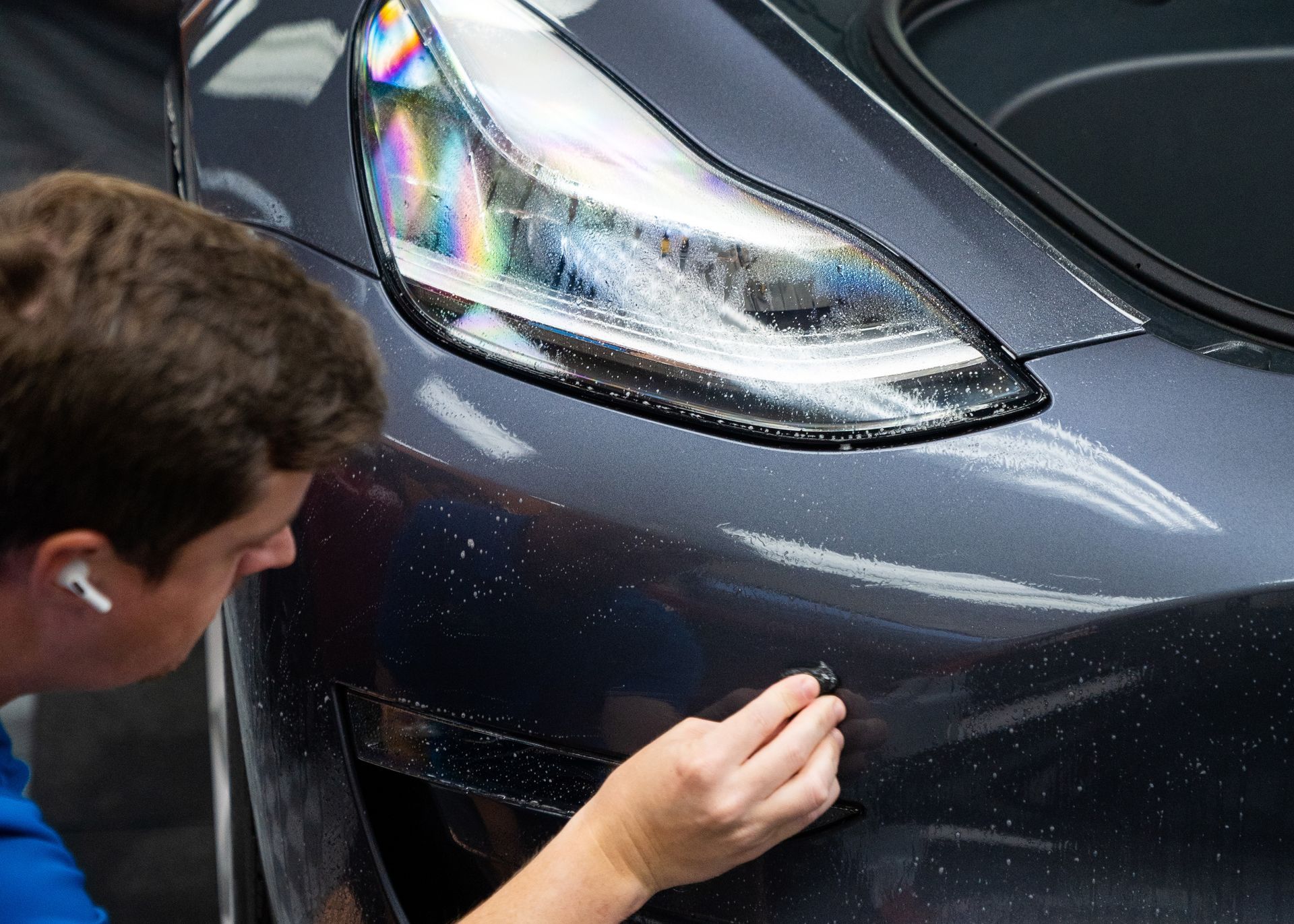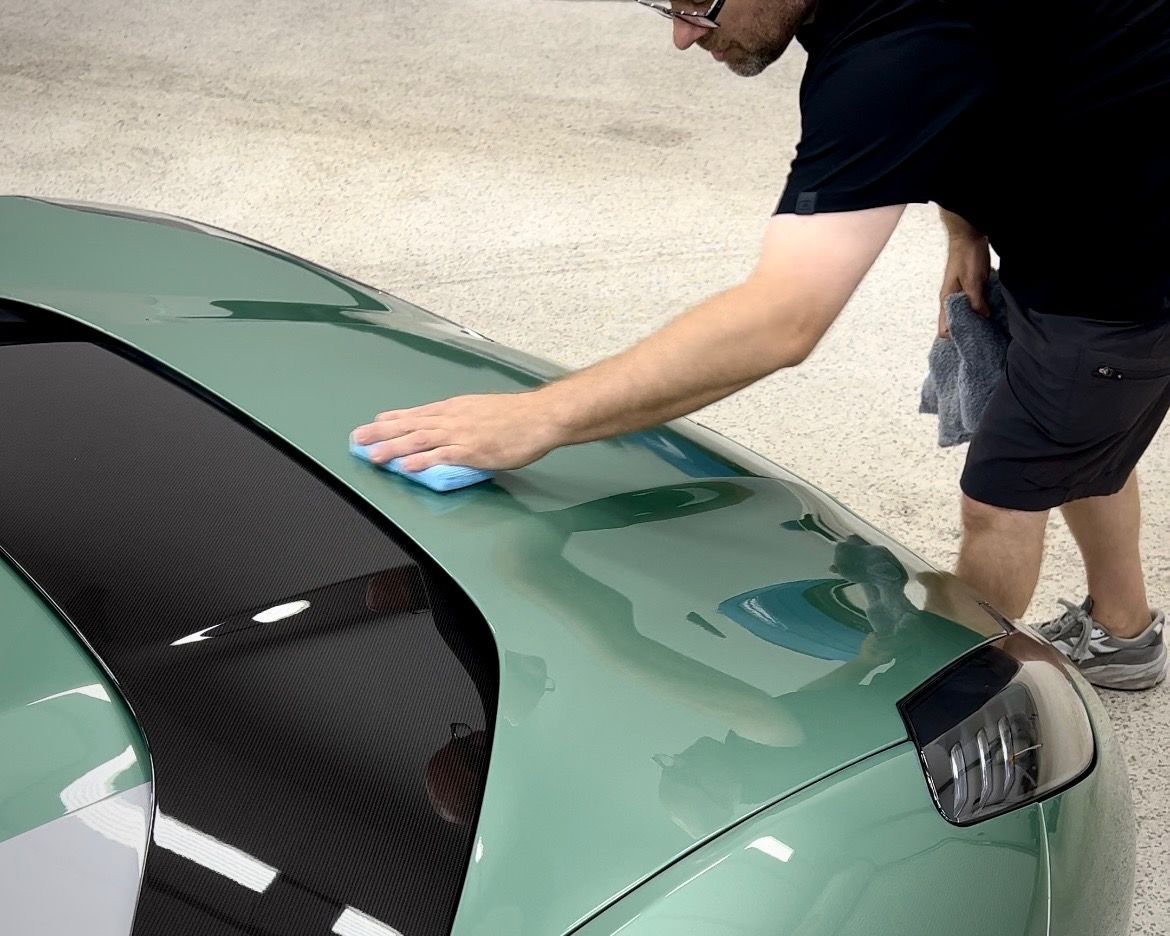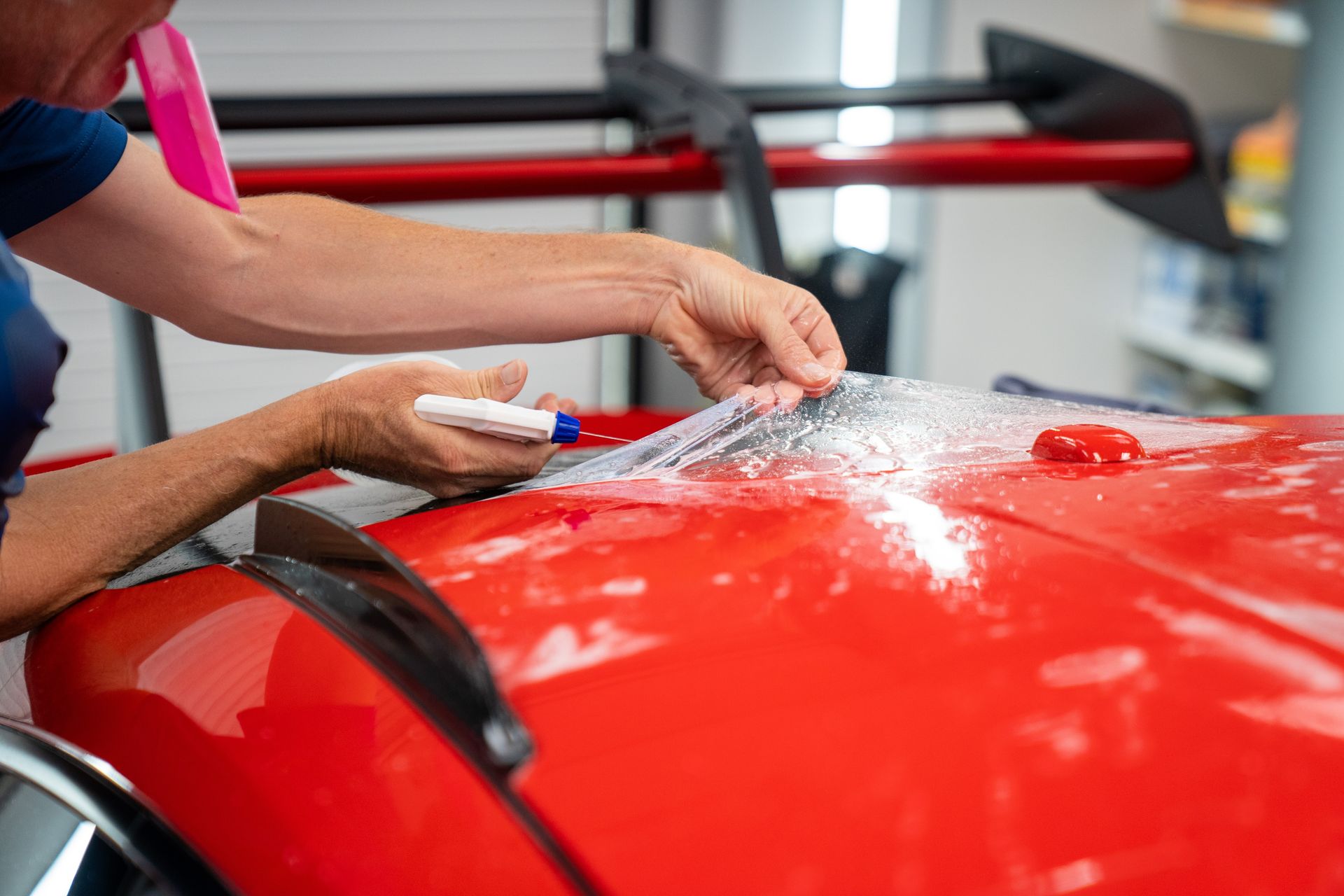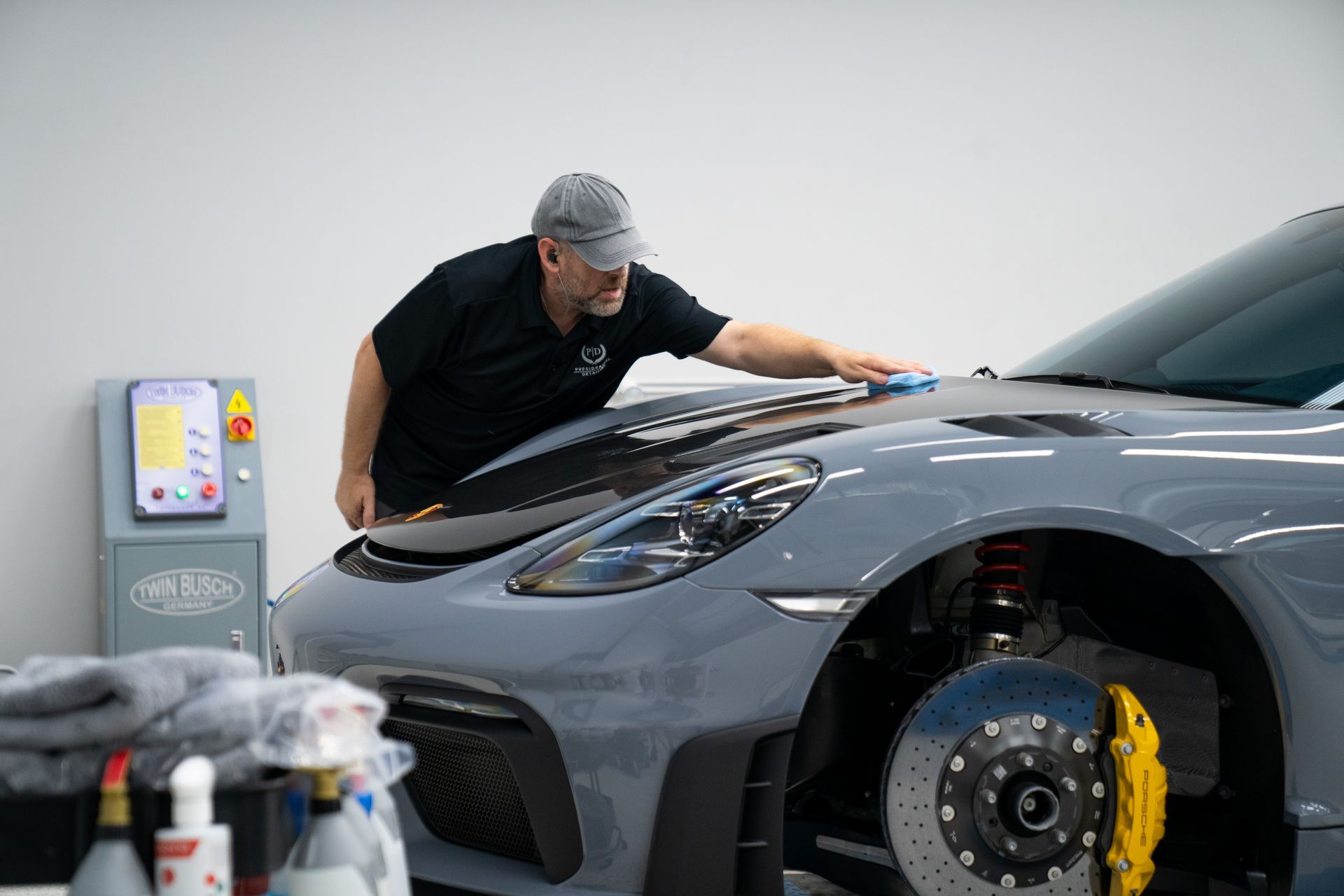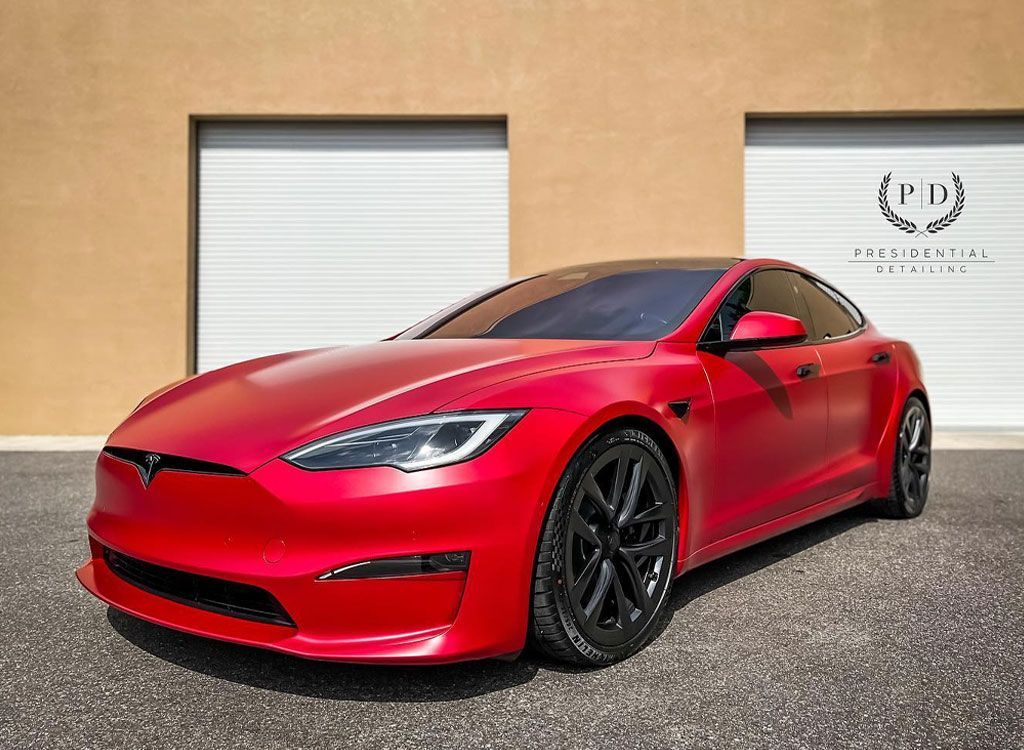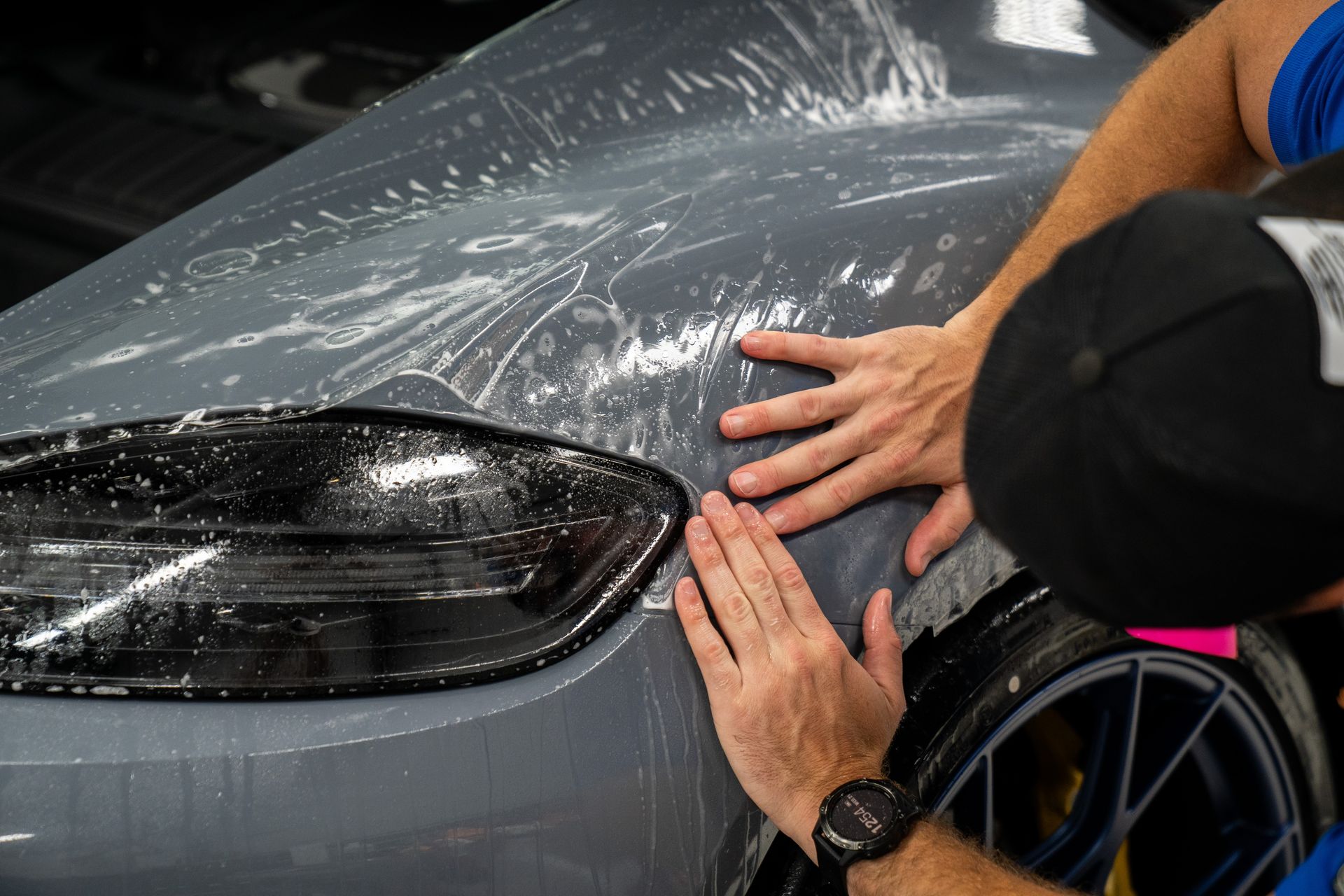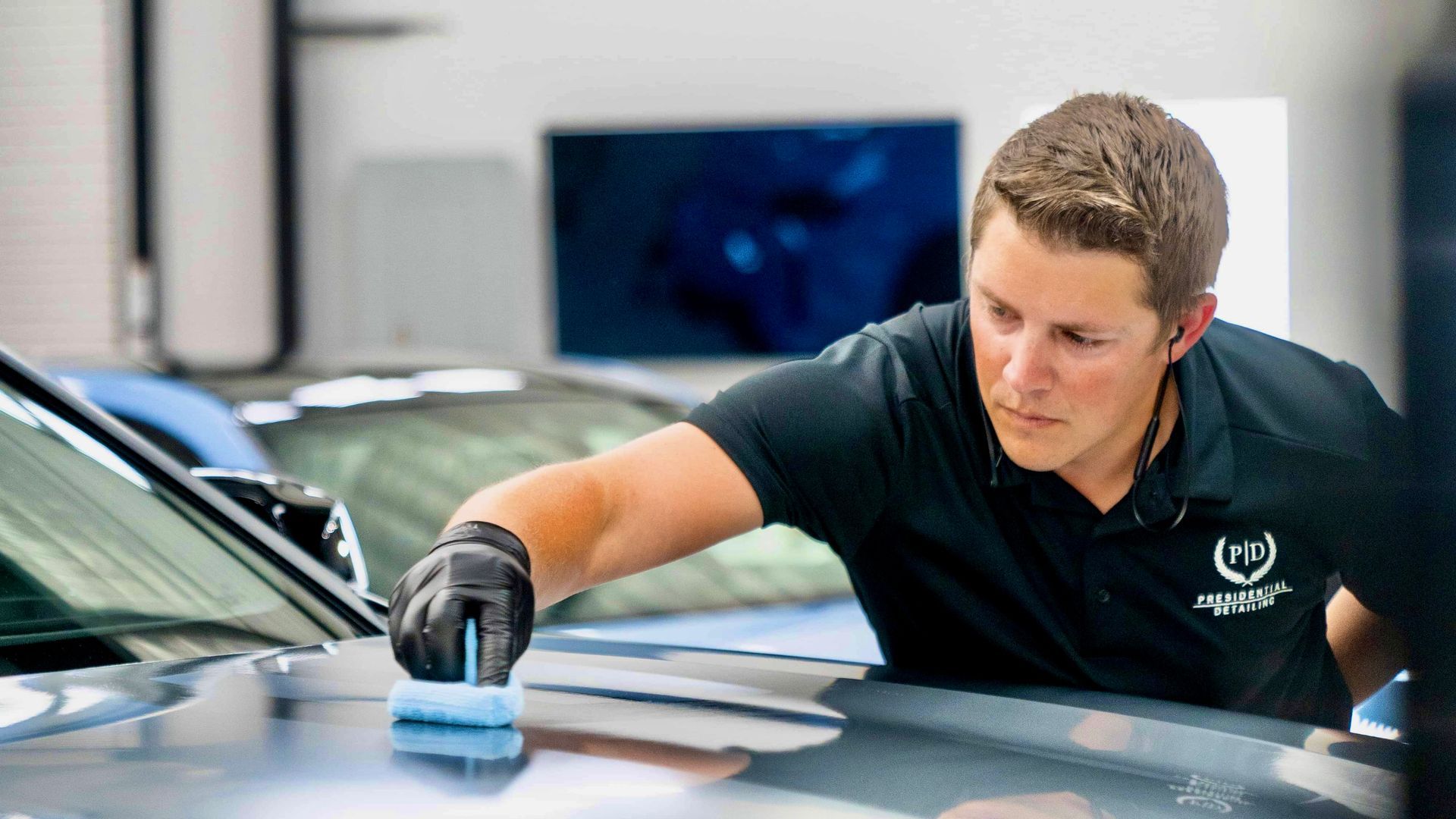Professional Ceramic Coating for Classic Cars: Why It’s a Must for Owners
CALL (813) 723-9679
GET A FREE ESTIMATEClassic cars are more than just vehicles; they're rolling pieces of history filled with memories and craftsmanship. As an owner, you know the pride that comes with showcasing your treasured ride at car shows or simply taking a weekend drive. But keeping that eye-catching paint job looking its best can be a challenge. That's where professional ceramic coating comes in. It's like giving your classic car a suit of armor to protect it from UV rays and all the grime the road throws at it.
Professional ceramic coatingis essential for classic car owners because it provides a durable layer of protection against environmental contaminants, UV rays, and stains, which can significantly preserve the vehicle's paintwork and value. Additionally, it enhances the car's appearance with a deep shine and makes maintenance easier by repelling dirt and grime.
Why Classic Car Owners Should Consider Ceramic Coating
The beauty of a classic car isn't merely skin deep; it's infused with history and nostalgia. To preserve that exquisite paint job and the allure that comes with it, ceramic coatings serve as a formidable shield against the elements. They provide a robust barrier against UV rays, bird droppings, tree sap, and harsh weather conditions that could otherwise cause damage.
One of the most compelling reasons to opt for ceramic coatings is their ability to significantly reduce maintenance time. Imagine not having to worry about frequent polishing or wax applications. With a ceramic-coated classic car, cleaning becomes easier—dirt and grime simply slide off, leaving behind that immaculate shine that classic car enthusiasts crave.
The financial aspect cannot be overstated. While the initial investment in ceramic coating might seem hefty, the long-term savings are evident. By making your vehicle's surface more durable, you effectively extend the intervals between costly services like repainting, which can run into thousands of dollars. Plus, the resale value remains buoyant when your classic car looks its finest.
However, beyond just offering protection and reducing upkeep, ceramic coatings amplify the visual charm of these iconic automobiles by adding depth and radiance that turns heads on any street. When sunlight hits a freshly coated classic car, it reveals vibrant colors and can even enhance metallic flecks embedded within the paint. This extraordinary finish not only makes your pride and joy stand out but essentially transforms it into a head-turning centerpiece wherever you go.
Enhancing Aesthetic Appeal
Many classic car enthusiasts do more than just drive their vehicles; they showcase them. A ceramic coating can transform your classic car into a veritable showpiece, capturing the essence of vintage aesthetics while providing a modern shine. When you apply a ceramic coating, it forms a bond with the underlying paint, resulting in an unparalleled gloss that brings out vibrant colors and intricate details that might have previously gone unnoticed.
The brilliance of ceramic coatings doesn’t stop at durability; it actively enhances color depth, making hues appear richer and more vivid. This effect is particularly striking on darker-colored cars, where the reflective surface can create stunning contrasts that highlight design features and curves. But this enhancement isn't limited to deep shades alone; lighter colors benefit as well, showcasing a clarity and brightness that draws attention. Investing in ceramic coating is like dressing your classic car in its best suit for an elegant evening out.
What makes this option even more appealing is its long-lasting nature compared to traditional waxes. Instead of dedicating hours every month to waxing your car for that perfect shine, ceramic coatings can last for several years without significant maintenance. It's as if you've applied a persistent layer of shimmer, ensuring your vehicle always looks freshly polished. With ceramic coating, you gain not just protection but also significantly elevate the curb appeal of your vehicle, enhancing your ownership experience while setting the stage for the features designed to provide lasting protection.
Long-Lasting Protection Features
Ceramic coatings are an excellent choice for classic car enthusiasts who want to preserve their vehicle's appearance and durability. From resisting UV rays to offering protection against harsh weather, ceramic coatings provide long-lasting benefits that traditional waxes can't match. Here’s a closer look at why this treatment is worth considering for any classic car lover.
- Durability Beyond Traditional Waxes: Ceramic coatings offer exceptional durability, unlike waxes that need frequent reapplications. Once applied, the coating bonds with your car’s exterior, providing protection for years. This means less time spent on maintenance and more time enjoying your vehicle.
- Hydrophobic Properties for Easier Cleaning: With their hydrophobic nature, ceramic coatings make water bead up and roll off the car's surface, taking dirt and grime along with it. This helps keep your car cleaner for longer and reduces the time and effort needed for regular washing.
- Protection Against UV Rays: Ceramic coatings act as a shield against harmful UV rays, which can cause fading and chalking over time. This barrier preserves your car's paint color and vibrancy, helping it look as stunning as the day it was first painted.
- Long-Lasting Defense Against Harsh Weather: Rain, snow, and UV rays pose serious threats to a classic car's exterior, leading to deterioration over time. A ceramic coating provides long-lasting protection, ensuring your car can withstand elements without losing its shine or structural integrity.
- Prevention of Paint Oxidation: UV rays can cause oxidation, leading to a dull and faded appearance on the car's surface. Ceramic coatings prevent this process, preserving the depth and richness of your car’s color and finish for years to come.
- Resistance to Acid Rain and Pollutants: Acid rain and pollutants can etch and damage unprotected surfaces. The smooth layer created by ceramic coatings prevents contaminants from adhering, minimizing long-term damage and cutting down on maintenance.
- Legacy Preservation for Generations: Ceramic coatings are an investment in your car’s legacy, protecting its finish and historical value. This treatment ensures that future generations can appreciate both the car’s story and its stunning appearance.
Choosing ceramic coating for your classic car is not just about immediate protection; it's a decision to preserve its beauty and historical significance for years to come. This advanced protection keeps your car looking exceptional while safeguarding it from the wear and tear of the elements.
The Ceramic Coating Application Process
Applying ceramic coating to your car can seem overwhelming, but breaking it down into key steps simplifies the process and leads to a superior finish. Each stage, from cleaning to curing, is essential for a durable, brilliant result. Here’s a structured guide to follow for optimal application:
- Preparation: Begin by thoroughly washing your car with a gentle automotive shampoo. This initial step removes dirt, contaminants, and any existing wax or sealants that could interfere with the ceramic coating. After washing, make sure to dry the car completely, paying extra attention to hidden areas where water might collect.
- Paint Correction: After cleaning, focus on paint correction to address scratches or imperfections that could affect the coating's finish. Minor scratches or swirl marks should be polished out using an orbital buffer with polishing compounds. This step may require some skill but creates a smooth base that maximizes the effectiveness and appearance of the ceramic coating.
- Application: With the surface prepped, apply the ceramic coating using a dedicated applicator pad in small sections—typically about 2x2 feet at a time. Work with overlapping strokes for thorough, even coverage, and use a clean microfiber cloth to buff out any excess. This approach ensures an even distribution of the coating, resulting in a sleek, professional look.
- Curing Phase: The curing phase allows the coating to bond fully with the car’s paint. Let the coating set undisturbed for 24 to 48 hours, which is crucial for long-lasting protection. Although it may be tempting to use your car immediately, this waiting period enhances durability and shields your car from environmental factors over time.
While DIY application is manageable, professionals can offer expertise for a flawless finish. If you opt for professional service, research providers who emphasize quality workmanship and prioritize customer satisfaction. Following each of these steps ensures a high-quality ceramic coating application that boosts your car's aesthetic and long-term protection. Each stage not only safeguards your vehicle but also enhances its value, making ceramic coating a worthwhile investment.
Evaluating Costs Versus Benefits
When considering ceramic coatings, the upfront cost may seem significant at first glance, often ranging from $500 to $2000 for a professional application. However, these initial expenses can translate into long-term savings and a higher return on investment. With regular maintenance and care, the protective qualities of ceramic coatings can last for years, making them a sound financial choice.
If we take a moment to compare this to the ongoing costs of traditional waxing or repainting services, the figures speak volumes. Frequent waxing not only requires consistent spending—usually around $100 per session—but also demands repeated effort every few months. In contrast, while the initial application of a ceramic coating may be more expensive, its durability means you can go without waxing for up to two years or more.
- Waxing Costs: Approximately $100 every 3-4 months totals around $300-$400 per year.
- Repainting Expenses: If damage occurs from harsh weather or UV exposure, repainting can easily exceed $1,000, depending on your vehicle's size and condition.
Therefore, when these routine costs add up, investing in a ceramic coating suddenly appears much more reasonable. Not only do you protect your classic car's finish from potential stains, UV rays, and environmental contaminants, but you also mitigate further expenses down the road.
Long-Term Savings
Some may contend that traditional waxing is cheaper initially; however, such arguments overlook the comprehensive protection a ceramic coating offers. While it’s true that waxing feels like an easy alternative upfront, its short lifespan and need for frequent reapplication make it less economical over time. Plus, consider the added value of peace of mind that comes with ceramic coatings. Knowing that your vehicle is well protected frees you from constant worry about daily wear and tear. This confidence allows car owners to truly enjoy their classic vehicles without feeling compelled to baby them at every turn. By grasping the correlation between costs and benefits, it's clear why many vintage vehicle enthusiasts are opting for this advanced form of protection.
Maintenance Tips After Coating
Post-coating maintenance plays a pivotal role in ensuring your classic car not only looks great but also retains its value. A simple yet effective approach is to use pH-neutral car shampoos, specially designed to maintain the integrity of your ceramic coating without stripping it away. This choice makes all the difference; harsh chemicals can cause more harm than good, eroding the very protection you’ve invested in.
Here's how to keep your investment shining:
- Immediate Wipe Downs: Whenever possible, prioritize quick clean-ups. If a bird graces your vehicle or tree sap lands on it, swift action can prevent permanent damage. These substances can eat through the coating if left unchecked, resulting in unsightly spots.
- Regular Washing: Aim to wash your car every two weeks. Consistent washing helps keep road grime, dirt, and other contaminants at bay. Think of it as a routine for maintaining cleanliness and enhancing the long-term performance of that beautiful coating.
- Avoid Automatic Car Washes: Automatic car washes might be convenient, but they often employ harsh brushes that could scratch or degrade your ceramic finish. Instead, consider handwashing methods, which allow for a gentler touch that protects the integrity of your car's surface.
By implementing these straightforward maintenance tips, you're not only preserving your vehicle's pristine condition but also ensuring that it remains a standout piece in any gathering of classic cars for years to come. In essence, protecting your classic automobile with professional ceramic coating and proper maintenance not only safeguards your investment but also enhances its overall appeal for years ahead.
Trusted Ceramic Coating Service in Tampa, FL
Protect your vehicle’s paint with Presidential Automotive Detailing’s
trusted ceramic coating service in Tampa, FL. Our premium-grade ceramic coating shields against sun, rain, and other environmental contaminants, preserving a brilliant, showroom-like finish that’s easy to maintain. With expert application and top-quality products, we ensure lasting gloss and protection. Book your ceramic coating today and keep your car looking its best with Tampa’s trusted detailing team. Call us at (813) 723-9679 to get started!
